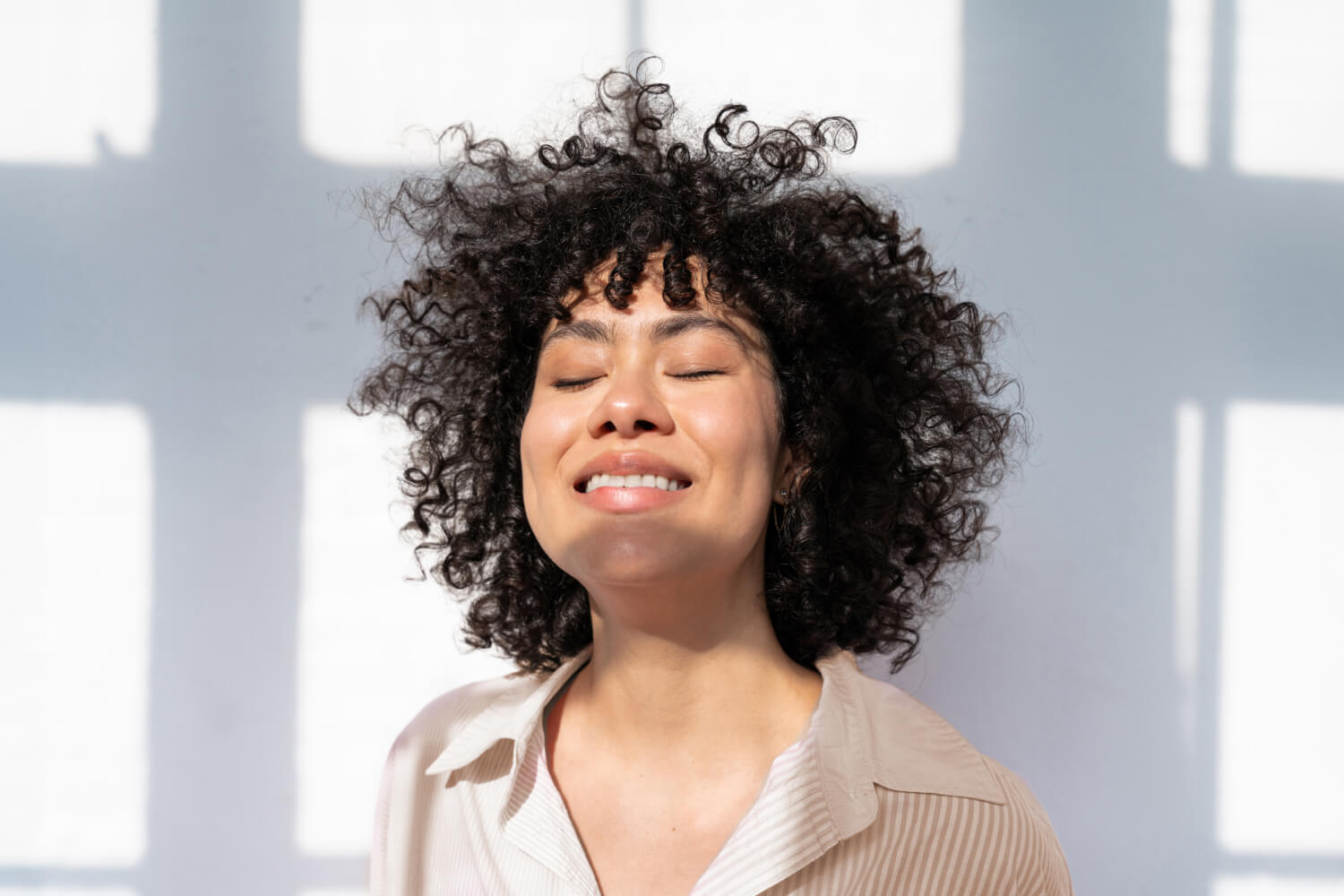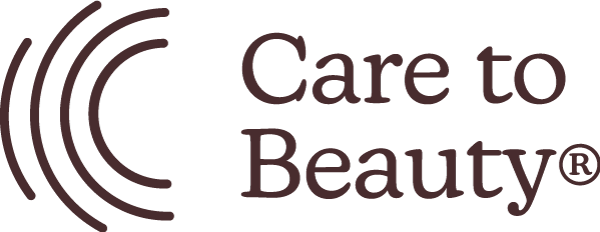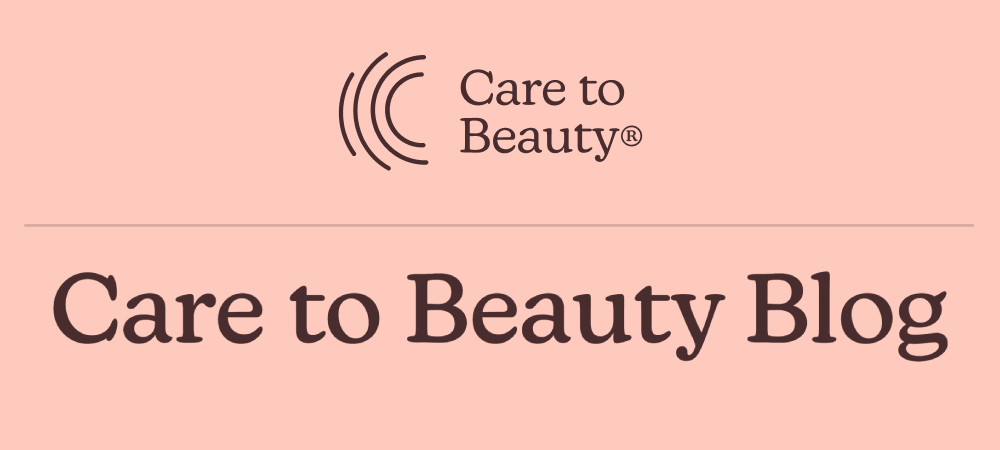
If you work from home, you’ve probably wondered if the perennial advice to wear sunscreen every day applies to you. After all, you barely ever leave the house, and you’re not even the type to sunbathe by the window–should you be wearing sunscreen every day, even indoors?
As with most things skincare: it depends. There are many variables to consider: the time you spend near windows, the orientation of those windows (are they north-facing, south-facing, or something in between?), the level of UV radiation outside, your skin type and skin concerns. Confused? Then keep reading for our deep dive into the greatest mystery of the work-from-home lifestyle: whether or not we should be wearing sunscreen indoors.
On this post:
- How to assess the need for sunscreen indoors
- Do UV rays go through house windows?
- How sunny is it really? The UV Index scale
- How photosensitive is your skin?
- Pros and cons of wearing sunscreen indoors
- What is the best sunscreen to wear indoors?
How to assess the need for sunscreen indoors
To help you understand whether you need to use sunscreen indoors, we’ll look at three variables: your windows, the intensity of solar radiation, and your skin’s sensitivity to the sun.
Do UV rays go through house windows?
Let’s establish a few things first: the purpose of sunscreen is to protect your skin from the damaging effects of solar radiation. It goes without saying that you are very exposed to solar radiation when you are outside, but how exposed are you, really, when you are indoors? To answer this, we need to figure out whether or not sun rays can reach you inside your home, through those beautiful, sun-drenched windows of yours.
Long story short, there are two types of sun rays: UVA and UVB. Whereas UVB rays are responsible for sunburn, UVA rays are the main culprits of photoaging, which manifests in the form of hyperpigmentation (melasma and dark spots), wrinkles, and unevenly textured skin. UVA rays can also contribute to skin cancer, which should be the main reason you choose to protect yourself from them.
Window glass can filter out UVB rays, but UVA rays will pass through mostly unaffected. According to one study, common smooth glass completely blocks the passage of UVB radiation, but allows 74.3% of UVA radiation to pass through. This means you won’t get a sunburn sitting by the window with your laptop, but you may be inadvertently increasing your risk of developing pigmentary conditions over the long term.
We’ve established one thing: sun rays can move through windows and reach you even if you’re indoors. If you spend a lot of time close to a window that gets direct sunlight, you may want to consider wearing sunscreen, even when indoors.
How sunny is it really? The UV Index scale
Some days are bright and sunny, some are grey and overcast–you can tell the difference, but there’s also a scientific way to figure it out. The Global Solar UV Index is an international standard that measures the UV radiation level at the Earth’s surface. It’s often a part of weather forecasts, so it’s simple enough to understand.
The UV Index starts at zero and goes up to 11+. As the index value increases, the potential for solar radiation to cause damage to the skin and eyes, and the speed at which this damage occurs, also increase. A UV Index of 0 to 2 indicates “Low” risk. Protection is not required for the average person, but people who have skin conditions exacerbated by sun exposure (such as rosacea, for example) or are prone to developing hyperpigmentation and melasma should still consider applying sunscreen.
An index of 3 to 5 indicates “Moderate” risk, 6 to 7 “High”, 8 to 10 “Very High”, and above 11 “Extreme”. On days when the UV Index is greater than 3, you should remain in the shade during peak sunlight hours and wear sun-protective clothing, a wide-brimmed hat, and sunglasses with UV protection. As for sunscreen, you know the rules: apply before sun exposure and reapply every 2 hours or so, even if the day looks overcast.
The UV Index can be a good tool to help you assess your need for sunscreen indoors. If the UV Index is below 3 and you are indoors, it may not be necessary to use sunscreen at all; however, if the index is higher than 3 and you are near a window that gets direct sunlight, it may be useful to wear sunscreen.
How photosensitive is your skin?
According to The Skin Cancer Foundation, “photosensitivity is heightened skin sensitivity or an unusual reaction when your skin is exposed to UV radiation from sunlight or a tanning bed.” There are several possible causes for photosensitivity: from medications, such as some antibiotics or antihistamines, to skin conditions, such as lupus, psoriasis, or rosacea.
If your skin is particularly sensitive to the sun, then it may be useful for you to use sunscreen every day, even when indoors. If you are prone to melasma or hyperpigmentation, the same is true for you.
Pros and cons of wearing sunscreen indoors
Once you’ve analyzed your personal need to use sunscreen indoors, you can also ask yourself about the pros and cons of this decision.
The main advantage of using sunscreen indoors, of course, is that you protect your skin from sun exposure, no matter how small. This is especially important if you are the type of person who likes to err on the safe side, or if your skin is particularly susceptible to sun exposure (if you have skin concerns such as rosacea or melasma, for example).
We also think that the great advantage of using sunscreen every day, rain or shine, indoors or outdoors, is that you end up developing a positive habit. If you get into the habit of doing it every day, even when it’s not necessary, you’re less likely to forget about it when it is. From a habit building perspective, we are generally in favor of wearing sunscreen every day.
As for the disadvantages: using sunscreen every day has an associated cost, of course, which can be prohibitive. It is also important to consider that, for many people, sunscreen feels like a necessary evil: they don’t like applying it and they don’t enjoy the feeling of wearing it, but they do it because it is necessary. If you are one of these people who hates sunscreen, then be kind to yourself: focus, above all, on using sunscreen on days with high UV radiation and high exposure, and give yourself some grace on days when the need is lower, or more ambiguous.
What is the best sunscreen to wear indoors?
Based on the information above–your individual exposure to the sun through your windows, the UV Index, and your skin type and concerns–, you should now have a good idea about whether it makes sense for you to use sunscreen every day, including indoors.
You can use the same sunscreen at home that you use outside, but let’s pretend for a second that you want a specific one–what should it feature? What would be the best sunscreen to use indoors?
As we have already seen, UVB radiation is mostly filtered out by the glass on your windows, so your main concern when indoors is your exposure to UVA rays. In this case, it is important to ensure that the sunscreen you use indoors offers broad-spectrum protection.
You see, early sunscreens weren’t expected to target UVA rays, so they were simply rated on their ability to ward off UVB rays (that’s what the SPF number means). This was bad news for those of us trying to figure out whether to wear sunscreen indoors, since we were already getting the UVB protection we needed from our windows. Science marches on, however, and nowadays we are all well aware of the dangers of UVA rays. Researchers, formulators, and customers alike all agree that we want–or better yet, we need–sunscreens that protect against both types of sun rays. That is what “broad-spectrum” means: a sunscreen that protects against both UVB and UVA rays.
How do you know if sunscreen is broad spectrum?
Broad-spectrum sunscreen is (fortunately) becoming the norm, so you won’t have to search far and wide for a product that protects you from both UVB and UVA rays. Most will simply claim to be “broad-spectrum” on the label, and that will tell you they offer protection against both UVB and UVA radiation. If you’re looking for a more specific system, there are two to keep an eye out for:
- The PA system, created in Japan, uses the letters “PA” followed by a series of plus signs to indicate how much UVA protection a product offers. You should be looking for products rated PA+++ (high UVA protection) or PA++++ (extremely high UVA protection);
- The European Union uses an alternate system: according to EU recommendations, the UVA protection for each sunscreen should be at least a third of the labeled SPF. This means that a product with a SPF of 30 should have a UVA protection rating, or PPD, of 10. A product that achieves this requirement will be labeled with a UVA logo that features the letters “UVA” printed in a circle.
As you already know, it’s not easy to speak with absolute certainty in the world of skincare: if, on the one hand, wearing sunscreen indoors can be important for people who are very exposed or particularly sensitive, for others it may not be as relevant. Only you can decide, based on the factors we have listed, whether this seems like a practice that makes sense for your day-to-day life.
As a general rule, here at Care to Beauty, we like to recommend the daily use of sunscreen in order to build a positive habit. If this makes sense to you, we have good news: with so many incredible sunscreens out there, it should be easy to find one that you will actually enjoy applying every day.
Beauty Writer & Editor


